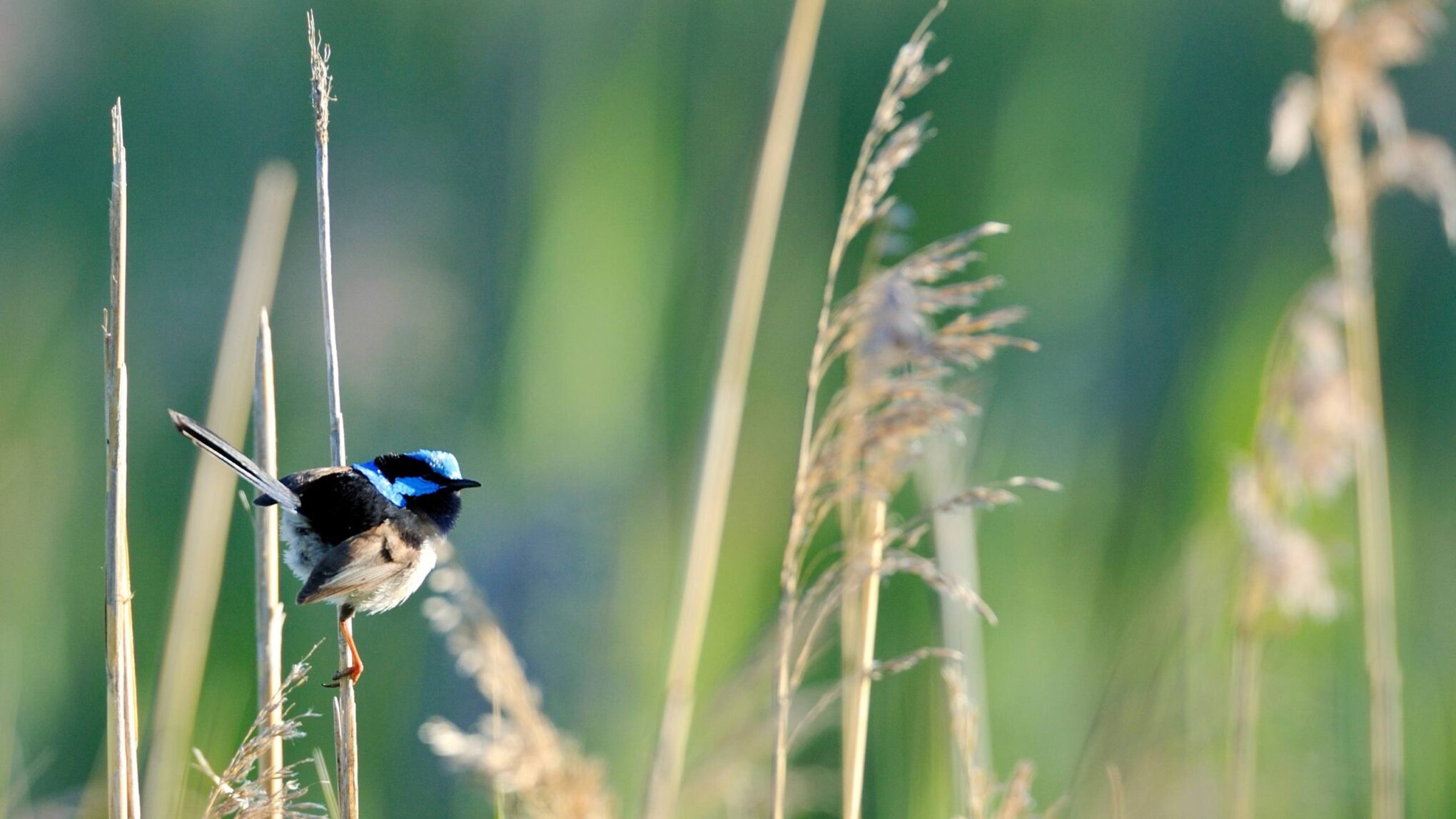VIDEO SNIPPET: Where have all the small birds gone?
Why are small birds on the decline? What can you do to attract them? This SGA Video Snippet takes a quick look at what factors contribute to a decline in small birds in your garden and what you can do to create a space in which they will thrive.
Water Smart Gardening 101 Video
Sustainable Gardening 101 Video Series
PART 4: Water Smart Gardening
As the climate changes we need to take extra care to design water smart gardens. Australia is the driest habitable continent in the world and there will be periods where water availability will be constrained. Similarly, our gardens will experience more extreme rain events. Whether it is too much or too little, water smart techniques can help keep your garden stay beautiful and productive.
Topics Covered:
- Smart design options and choices that reduce water usage
- The role of garden zones, plant selection, mulch in Water Smart gardening
- How you to improve soil’s water holding capacity
- The role of your garden in stormwater management.
Low Impact Pest Management 101 Video
Sustainable Gardening 101 Video Series
PART 3: Low Impact Pest Management
Gardens are the natural habitat for all types of insects – the good, the bad and the ugly. Learn how to avoid unnecessary chemical use by managing the pests in your garden by using nature and its resources to strengthen the balance towards the beneficial kind.
Topics Covered
- Being a detective – identifying the culprits
- Beneficial insects vs pests
- Using barriers and cultural strategies
Information about risks and safety of commercial chemical pesticides is in SGA’s app WiseGardening – Choices to Protect You and the Planet. Safety of home-made pesticides could not be included in that app due to unavailability of information about their soap, detergent and oil ingredients. Always use them with caution.
Soil Farming 101 Video
Sustainable Gardening 101 Video Series
PART 2: Soil Farming
What’s the secret to success in the garden? It is all about the soil! We need to concentrate not on feeding our plants, but on feeding the soil! Healthy soil is full of life and fundamental to the health of our gardens. It provides all plants with all the nutrients and water they need to grow. Learn about the science of soil and how to improve it in an environmentally beneficial way that in-turn supports your plants to be productive.
Topics Covered:
- Soil types and amending or improving challenging soil
- Introduction to the Soil-Food-Web, soil microbes, fungi and soil bio-diversity
- pH and how to adjust it
- Top tips in soil activation
Composting and Worm Farming 101 Video
Sustainable Gardening 101 Video Series
PART 1: Composting and Worm Farming
Sustainable gardens need compost! And plenty of it! Composting your kitchen and garden waste into “black gold” will feed your garden and help the environment. Learn how to activate your compost system to increase your output to get it to a level that will keep up with your gardens needs.
Topics Covered:
- What is compost and how it is made
- The environmental benefits of composting
- The basic compost recipe
- Worm Farming
- Troubleshooting
Top Productive Perennials
Productive perennials provide solutions to many of today's gardening challenges. Top of the list is that they save time! Perennials don't need to be replaced yearly like typical annual veggie crops. Secondly, climate change means we are looking for edible plants that can withstand extremes. With many perennials originating from hot climates they are well suited to Australian conditions. And finally, with the growing cost of fresh produce it is great back-up to know you have hardy productive perennials as a constant in your garden.
Here are some of SGA's favourites:
Leafy Green Perennials
Warrigal Greens (Tetragonia tetragonioides)
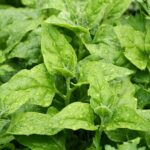 Warrigal greens are an edible perennial Australian native groundcover. Growing naturally in all parts of Australia except the Northern Territory, it is a leafy ground cover spreading to around 1.5m. It can be seen growing between rocks near beaches, on sand dunes and in estuaries and is tolerant of wind and salty soil. The leaves make a wonderful spinach substitute, but the stems are not edible. Leaves are high in vitamins A, B1, B2 and C3 and fibre as well as anti-oxidants.
Warrigal greens are an edible perennial Australian native groundcover. Growing naturally in all parts of Australia except the Northern Territory, it is a leafy ground cover spreading to around 1.5m. It can be seen growing between rocks near beaches, on sand dunes and in estuaries and is tolerant of wind and salty soil. The leaves make a wonderful spinach substitute, but the stems are not edible. Leaves are high in vitamins A, B1, B2 and C3 and fibre as well as anti-oxidants.
Read more about growing warrigal greens in our Expert SGA Article - Warrigal Greens.
Malabar Spinach (Basella rubra)
 This decorative vine can provide nutritious, lush, green leaves for cooking or salads all summer long. The small tender leaves are best for salads. Malabar spinach originated in tropical Africa and Asia so grows best in the warmer northern regions of Australia where it grows as a perennial. In cooler regions it will grow as a vigorous annual in summer, dying off in winter. When grown in good compost and watered twice a week, the vines will climb steadfastly upwards covering tripods and trellises creating a wall of leaves. Undeterred by extreme conditions they almost seem to go crazy in heatwaves. Cook the leaves as you would spinach. They make valuable additions to curries and stews.
This decorative vine can provide nutritious, lush, green leaves for cooking or salads all summer long. The small tender leaves are best for salads. Malabar spinach originated in tropical Africa and Asia so grows best in the warmer northern regions of Australia where it grows as a perennial. In cooler regions it will grow as a vigorous annual in summer, dying off in winter. When grown in good compost and watered twice a week, the vines will climb steadfastly upwards covering tripods and trellises creating a wall of leaves. Undeterred by extreme conditions they almost seem to go crazy in heatwaves. Cook the leaves as you would spinach. They make valuable additions to curries and stews.
Read more about growing Malabar spinach as well as background on a research project looking into the medicinal properties of the vines berries in our Expert SGA Article - Malabar Spinach Research Project.
Veggie Perennials
Globe Artichoke (Cynara scolymus)
 The Globe Artichoke is a member of the Asteraceae family, is a thistle and the flower bud is eaten. As well as providing food, globe artichokes are attractive plants in the garden. Growing to 1 – 1.5 metres in height and width, they make a stately feature and because they are perennial, a spot needs to be chosen that allows full advantage to be taken of the appearance of their graceful arching leaves.
The Globe Artichoke is a member of the Asteraceae family, is a thistle and the flower bud is eaten. As well as providing food, globe artichokes are attractive plants in the garden. Growing to 1 – 1.5 metres in height and width, they make a stately feature and because they are perennial, a spot needs to be chosen that allows full advantage to be taken of the appearance of their graceful arching leaves.
Read more about growing globe artichokes in our Expert SGA Article - Globe Artichokes.
Asparagus (Asparagus officinalis)
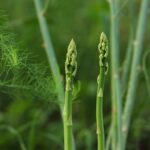 Asparagus is quite easily grown and when established, will continue to produce for 15-20 years, so it is important to allocate it its own bed, where it will not be disturbed by the comings and goings of short lived annual crops. It must also be kept weed free and well mulched with pea straw or Lucerne mulch. A sunny position, preferably free from strong winds and potential competition from trees should be chosen for the permanent placing of these perennial plants.
Asparagus is quite easily grown and when established, will continue to produce for 15-20 years, so it is important to allocate it its own bed, where it will not be disturbed by the comings and goings of short lived annual crops. It must also be kept weed free and well mulched with pea straw or Lucerne mulch. A sunny position, preferably free from strong winds and potential competition from trees should be chosen for the permanent placing of these perennial plants.
Read more about growing asparagus in our Expert SGA Article - Asparagus.
Fruity Perennials
Rhubarb (Rheum rhabarbarum cv.)
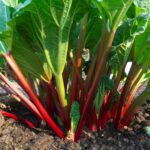 Although technically a vegetable, rhubarb stems are mostly used as a fruit in a culinary sense - delicious stewed, in pies or crumbles. This herbaceous perennial lives for a number of years, so although it can die down during winter months it does bounce right back up again in spring, making it a great (almost) continual harvest.
Although technically a vegetable, rhubarb stems are mostly used as a fruit in a culinary sense - delicious stewed, in pies or crumbles. This herbaceous perennial lives for a number of years, so although it can die down during winter months it does bounce right back up again in spring, making it a great (almost) continual harvest.
Read more about growing rhubarb in our Expert SGA Article - Rhubarb.
Pepino (Solanum muricatum)
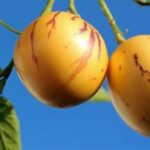 The pepino, known also as melon pear has been widely known in South America where it originated, but it took quite a while to get into Australian gardens. One of its big advantages is that it is a bushy shrub which persists from year to year in temperate regions and produces fruit for many months – even the whole year in warmer areas.
The pepino, known also as melon pear has been widely known in South America where it originated, but it took quite a while to get into Australian gardens. One of its big advantages is that it is a bushy shrub which persists from year to year in temperate regions and produces fruit for many months – even the whole year in warmer areas.
Read more about growing pepinos in our Expert SGA Article - Pepino - A Perennial Fruiting Shrub.
Midyim Berry (Austromyrtus dulcis)
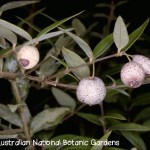 The midyim berry Austromyrtus dulcis is an easy to grow bushfood which occurs naturally in coastal areas ranging from northern NSW to Fraser Island in Queensland. It is (also known as midgen berry or sand berry). A favourite with First Nation’s people it has a sweet, but tangy flavour which means it is nice to eat fresh, but also great in pies and preserves.
The midyim berry Austromyrtus dulcis is an easy to grow bushfood which occurs naturally in coastal areas ranging from northern NSW to Fraser Island in Queensland. It is (also known as midgen berry or sand berry). A favourite with First Nation’s people it has a sweet, but tangy flavour which means it is nice to eat fresh, but also great in pies and preserves.
Read more about growing midyim berries in our Expert SGA Article - Midyim Berry.

